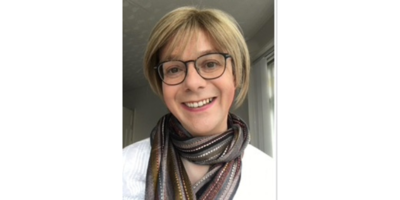QuanTII network receives H2020 EU funding

A new Innovative Training Network (ITN) to study T cells will be coordinated by the School of Mathematics.
Quantitative T cell Immunology and Immunotherapy (QuanTII) will develop quantitative understanding and mathematical modelling techniques for T cell dynamics, receptor repertoires and immunotherapies.
It will be funded via the European Union’s H2020 Marie Skłodowska-Curie Innovative Training Networks, which supports joint research training and doctoral programmes.
Funded between 2018 and 2022, it will bring together scientists from 16 academic, clinical, industrial and governmental organisations. An earlier incarnation of the project (QuanTI), funded between 2013 and 2017 by FP7, was also coordinated by Professors Grant Lythe and Carmen Molina-París of the School of Mathematics.
Under QuanTII, 15 early-stage researchers will be trained in an international, multidisciplinary and intersectoral environment, under the guidance of leading EU scientists in the fields of mathematics, immunology, medicine, statistics and bioinformatics. The University of Leeds will host three of these researchers.
The project aims to train a new generation of European quantitative immunologists, and to establish mathematical modelling as a hypothesis-generating and testing tool to foster new understanding of immune responses in health and disease.
Why study T cells?
Vaccination saves lives because of the immune system property known as memory. Although the majority of successful vaccines rely on antibody-producing B cells, the T cell arm of the immune system also maintains long-term memory.
Understanding the mechanisms that control the abundance of cell subsets is key to therapeutically targeting immune responses. Ultimately, this understanding must be sought in quantitative terms, establishing how the rates of cell proliferation, differentiation, survival and death are determined by molecular mechanisms and cellular interactions.
The key to understanding long-term T cell memory lies in unravelling the in vivo dynamics of T cell subsets and their spatial compartmentalisation in the human body, including central, effector, stem-cell, and the recently-identified tissue-resident, memory cells.
It remains unclear to what extent long-lived memory T cell populations are maintained by self-renewal, influx from other cell populations, or the longevity of individual cells. Current debate about the role of the bone marrow compartment, for example, demonstrates the difficulty of quantitating the dynamics of memory T cell populations outside the blood.
Who’s involved?
QuanTII will be coordinated by two academics from the School of Mathematics of the University of Leeds and involves ten universities and research institutes, three public sector and three private sector partners.
Academic partners
- The University of Leeds
- Imperial College London
- University of Utrecht
- University Medical Centre Utrecht
- National University of Ireland Maynooth
- National University of Ireland Galway
- German Cancer Research Centre Heidelberg
- University of Minnesota
- St Jude Children's Research Hospital
- Walter and Eliza Hall Institute of Medical Research
Public sector partners
- Public Health England
- National Institutes of Health
- French National Centre for Scientific Research
Private sector partners
- Bayer AG
- AstraZeneca
- MedImmune




